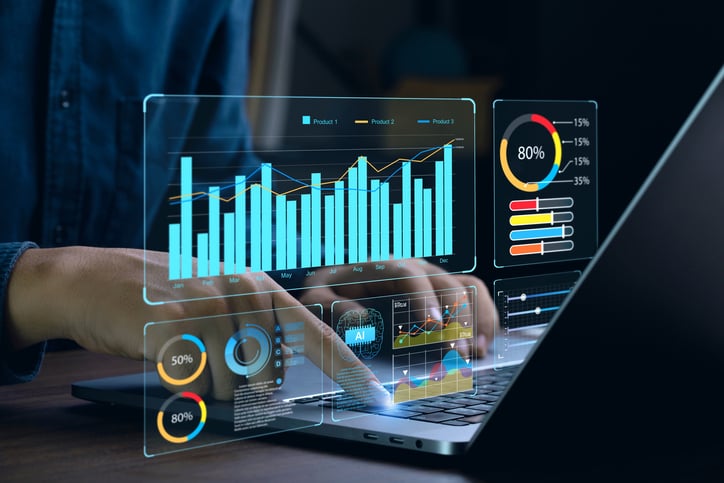Toolkit Recommendations for Procurement Analysts

Over the past two decades, the number of businesses has increased significantly, and the potential supply pool contains more suppliers than ever.
According to Statista, about 334 million businesses operated worldwide in 2021, a 63-percent increase since 2000. This has led to more sourcing complexity, the process which requires consideration of companies’ and suppliers’ needs as well as regulations and sustainability standards. Ultimately, these considerations require organizations to go beyond standard procurement practices and engage the specialties of all team members to reach their goals and compete effectively in a global market.
Procurement analysis is often used to understand an organization’s current spend landscape, with the goal of identifying areas to improve efficiency while maximizing profitability and enabling meaningful participation in their market. All levels within procurement, from CPOs to analysts, can leverage elements of procurement analysis to realize savings and maintain an adaptive and resilient supply chain for their organizations.
Specifically, procurement analysts, those early in their career and new to the market, support organizations by providing recommendations on supplier optimization, evaluating tender results, monitoring procurement KPIs, and sharing insights on such critical dynamics as payment terms, tail spend and maverick buying. Procurement analysts are part of most procurement teams today, and with the right tools, techniques and skills, they can dive deep into company data to uncover strategic insights.
Procurement analysts can leverage various tools for success.
Structured and Cleansed Data
Access to clean, structured data plays a significant role in an organization’s analytical capabilities. Data is the lifeblood of a company in any industry, yet an estimated 73 percent of corporate data goes unused. Without it, a company is making decisions based on preconceptions and unvalidated ideas, which can lead to unexpected results and failure to compete.
Often, organizational data is stored standalone at the initial place of data recording. To take advantage of such data, companies must transition to a centralized database where data is easily accessible for all relevant users with the optimal security standards in place.
With a structured data set, procurement analysts can leverage the output from data cleansing and enrichment activities — such as supplier normalization, translation of transactional text and data classification to a formal procurement taxonomy — to perform meaningful category analysis. Additionally, with access to well-organized data in parallel with information from external sources, procurement analysts can consider details about a supplier’s performance, financial stability or ownership structure to highlight trends and insights for their leadership teams.
Procurement analysts also need spend data to help their organizations make intelligent procurement decisions and cut costs. Data fields such as supplier name, PO and invoice text information, cost center details and spend total help to paint a picture of how corporate money is spent.
As such details can now be retrieved from a centralized and reliable source, spend analysis can help to identify tail spend or preferred suppliers to highlight opportunities for spend consolidation and savings. Another insight can come from identifying recurring purchases and making recommendations on catalogs or ways to better control spend.
Ultimately, with an understanding of the spend data on hand, often summarized by procurement analysts, a business can combat poor purchasing tendencies and bring savings to the bottom line.
Solutions From Prepopulated Dashboards
A prepopulated dashboard can provide immediate access and understanding of common procurement metrics. Experienced analysts with knowledge of the procurement landscape are responsible for creating and maintaining such dashboards that enable informed decisions across the organization.
One example is a payment analytics dashboard, which visualizes the collected information regarding how and when a company pays for goods and services. The analysis may include a cash flow benefit lost estimate, highlighting the relationship between days to pay and agreed upon payment terms as well as the money lost by paying suppliers early.
Analyzing the trends of missed payment windows can lead to actions preventing unnecessary late fees in the future and improving supplier relationships. Further, insight into payments made too early and letting go of cash too soon can lead to processing those payments later and increasing the company’s cash on hand.
Another element uses a what-if analysis to aid in optimizing payment terms with each supplier. There is a happy medium when it comes to paying suppliers, and the payment data visualized in a payment analytics dashboard provides insight into maximizing those benefits.
Other dashboard examples may include ones that monitor incompliant sourcing behavior (like retrospective PO creation), provide contract analyses and insight into upcoming renewals, or analyze pricing on a unit basis using PO or invoice data.
Digital Transformation for Data
In a world where the advantages of artificial intelligence (AI) are pervasive and accessible to anyone at any time, one might think that the cumbersome way of juggling several Microsoft Excel spreadsheets and pivot tables is outdated.
However, research from Ventana Research, a business and IT research company in Bend, Oregon, suggests that digital transformation in the field of sourcing and procurement is more talked about than done. While organizations might be eager to explore the opportunities of generative AI, for example, it can be difficult to know where to start — and that is where procurement analysts can use their enthusiasm and drive to be the difference makers for their organizations.
A wide range of data visualization platforms now have an AI component (mostly relying on large language models) with a self-service user interface that makes it easy to create dashboards with only a few clicks. They provide narrative insights, which can prove helpful when executing RFX evaluations, monitoring supplier lead times, tracking year-to-date cost-saving figures or verifying the latest PO cycle time.
Working together with developers, procurement analysts can exploit the capabilities of their utilized platforms by tailoring the user interface to the organization’s needs through customized chatbots, targeted prompting of the underlying models, or predictive analytics, helping to automate tasks and identify cost-saving opportunities in real time.
Supply chains are growing, technologies are becoming outdated, and best practices are changing at a rapid pace. With new supplier opportunities and increased competition entering the market, organizations must have access to cleansed, structured, and consolidated data for a complete view of their procurement operations.
Having a procurement analyst with an adaptable mindset is crucial as data is leveraged to identify meaningful trends, insights and opportunities that enable informed decisions across all procurement functions. Ultimately, analysts serve as a source of competitive advantage for organizations in a dynamic and ever-changing business landscape.


